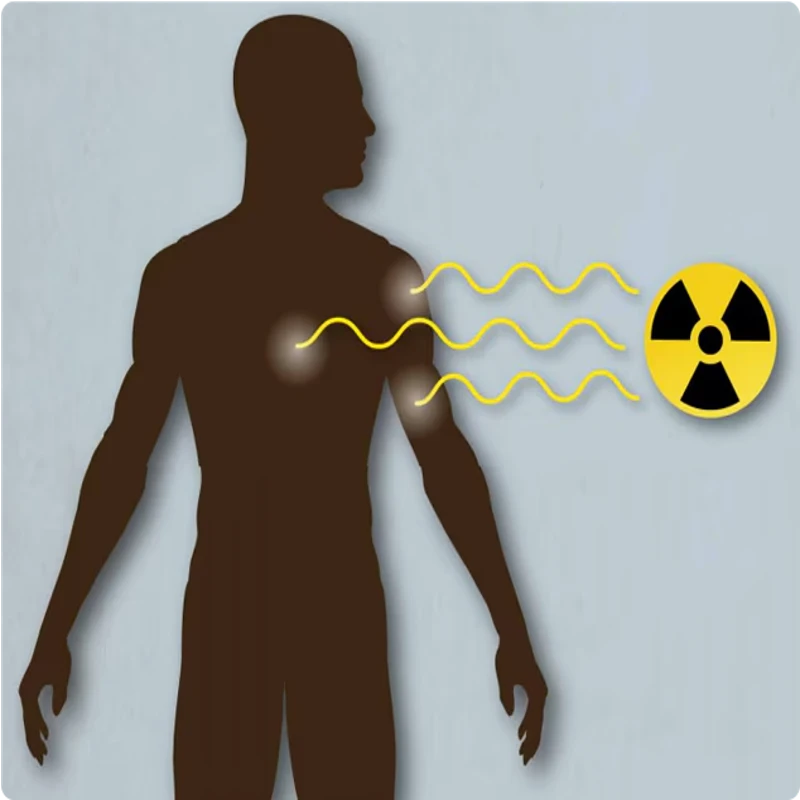Radiation exposure is a natural part of daily life, but understanding its risks and safety measures is crucial for maintaining health. From cosmic rays to everyday electronics, radiation surrounds us, often unnoticed. Geiger counters and portable radiation monitors are invaluable tools for measuring and managing radiation levels, empowering individuals to take control of their safety. This article explores the guidelines for safe radiation levels, focusing on defining exposure limits and practical safety tips to ensure well-being in various environments.
Understanding Radiation Exposure
Radiation Types and Measurement
Radiation is broadly categorized into ionizing and non-ionizing types. Ionizing radiation, such as X-rays and gamma rays, has enough energy to remove electrons from atoms, potentially causing damage to living tissue. Non-ionizing radiation, like radio waves and microwaves, is generally less harmful. Radiation exposure is measured in units such as sieverts (Sv), which quantify the biological effect, and becquerels (Bq), which measure radioactive decay.
Natural vs. Man-Made Sources
Natural radiation exposure comes from sources like cosmic rays, radon gas, and even certain foods. Man-made sources include medical imaging devices, smoke detectors, and consumer electronics. Understanding these sources is vital for effective exposure risk assessment and minimizing unnecessary contact.
Average and Maximum Allowable Doses
Safe radiation levels are defined by international organizations like the International Commission on Radiological Protection (ICRP). The average annual radiation dose for the general public is approximately 2.4 millisieverts (mSv) from natural sources. The allowable radiation dose for occupational exposure typically does not exceed 20 mSv per year for workers.
Guidelines for Safe Radiation Exposure Levels
Daily Radiation Exposure
Most people encounter minimal radiation levels in their daily lives, including background radiation from natural and artificial sources. These levels are generally considered safe when kept within the limits set by radiation protection standards.
Occupational and Environmental Limits
Workers in industries involving radiation, such as healthcare and nuclear energy, must adhere to strict exposure limits. The ICRP recommends an annual occupational dose limit of 20 mSv, averaged over five years. For the general public, safe exposure limits in residential areas are capped at 1 mSv per year, excluding natural background radiation.
Safe Exposure Limits
Radiation protection standards emphasize minimizing exposure to as low as reasonably achievable (ALARA). For instance, international guidelines suggest maintaining exposure below 1 mSv annually for non-occupational settings to reduce potential health risks.
Monitoring and Managing Radiation Exposure
Using Geiger Counters Effectively
A Geiger counter is a reliable device for measuring radiation levels in your surroundings. To ensure accurate readings, Geiger counter calibration should be performed regularly. Proper calibration guarantees that the device provides precise data for effective monitoring practices.
Portable Radiation Monitors and Personal Detectors
Portable radiation monitors offer convenience and accuracy for assessing radiation levels during daily activities. These devices are especially useful for environmental safety checks, such as measuring radon levels in homes or identifying potential hazards in workplaces.
Measuring and Reducing Cumulative Radiation Dose
Tracking cumulative radiation dose over time is essential for long-term health. Strategies to minimize exposure include reducing time spent near radiation sources, maintaining a safe distance, and using shielding materials when possible. Portable radiation monitors can help track and manage cumulative exposure effectively.
Effective Monitoring Practices
Regular monitoring with reliable tools ensures timely detection of elevated radiation levels. Homeowners and professionals alike benefit from conducting periodic environmental safety checks to identify and mitigate risks promptly.
Health Implications and Safety Tips
Health Risks of Radiation Exposure
Exposure to high levels of ionizing radiation can lead to severe health issues, including tissue damage and increased cancer risk. While natural radiation exposure is generally harmless, prolonged exposure to ionizing radiation should be carefully managed to avoid potential health effects.
Radiation Safety Awareness
Education plays a crucial role in understanding radiation risks and implementing safety measures. Awareness of safe radiation levels and adherence to radiation protection standards are fundamental to minimizing risks.
Radiation Protection Measures
Practical radiation safety tips include:
Conclusion
Understanding and adhering to safe radiation exposure levels is essential for protecting your health in daily life. By using tools like Geiger counters and portable radiation monitors, individuals can monitor and manage their exposure effectively. Regular environmental safety checks and adherence to radiation protection standards provide additional layers of security. Take proactive steps today to safeguard your well-being against radiation risks and ensure a healthier future.



Commenta
Questo sito è protetto da hCaptcha e applica le Norme sulla privacy e i Termini di servizio di hCaptcha.